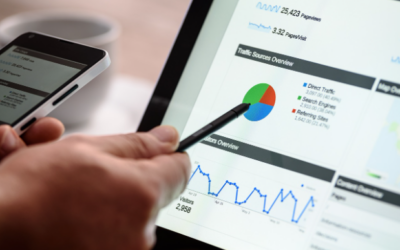Email marketing is a powerful tool for B2B lead generation, offering a direct and effective way to reach potential clients. When done right, email marketing can be a game-changer for businesses of all sizes, providing a cost-efficient method to nurture leads and drive conversions. In this comprehensive guide, we will delve into the strategies and best practices for leveraging email marketing to generate quality B2B leads, focusing on informative and value-driven content that resonates with your target audience.
Crafting Your Email Marketing Strategy
Understanding Your B2B Audience
Understanding your B2B audience is the cornerstone of any successful email marketing strategy. Unlike B2C, B2B audiences often have different needs and expectations. Start by creating detailed buyer personas that include job roles, industry specifics, and pain points. Knowing your audience helps you tailor your content to address their unique challenges and solutions. Conduct surveys, analyze previous interactions, and use data analytics tools to gather insights. The more you know about your audience, the better you can segment your email lists, ensuring that your messages are relevant and engaging. This targeted approach not only enhances open and click-through rates but also fosters trust and credibility, positioning your brand as a valuable resource in their decision-making process.
Creating Compelling Content
Creating compelling content is essential for effective email marketing B2B lead generation. Your emails should provide value to the reader, offering insights, solutions, and information pertinent to their industry and role. Start with a strong subject line that piques interest and conveys the essence of your message. The body of your email should be concise and focused, addressing specific pain points and offering practical solutions. Use a mix of text, images, and even videos to make your content visually appealing and engaging. Including case studies, whitepapers, or exclusive industry reports can further demonstrate your expertise and provide tangible value. Remember to incorporate clear calls-to-action (CTAs) that guide the reader on what steps to take next, whether it’s downloading a resource, signing up for a webinar, or contacting your sales team. This approach not only keeps your audience engaged but also moves them further down the sales funnel.
Timing and Frequency Matters
Timing and frequency are critical components of a successful email marketing strategy for B2B lead generation. Sending emails at the right time increases the likelihood of your message being seen and acted upon. Research suggests that mid-week, specifically Tuesday to Thursday, and mid-morning times are optimal for B2B email open rates. However, it’s essential to analyze your own audience’s behavior to determine the best timing.
Frequency is equally important. Too many emails can lead to annoyance and unsubscribes, while too few can result in disengagement. A good starting point is to send one to two emails per week, but always monitor your audience’s response and adjust accordingly. Utilize A/B testing to experiment with different sending times and frequencies to find the sweet spot for your audience. Balancing timing and frequency helps maintain engagement without overwhelming your recipients, ultimately leading to more effective lead generation.
Enhancing Lead Generation Tactics
Personalization: The Key to Engagement
Personalization is a crucial element in driving engagement in your email marketing B2B lead generation efforts. Tailoring your emails to the individual recipient can significantly enhance the relevance and impact of your messages. Start by using the recipient’s name and company in the subject line and greeting. Beyond these basics, leverage data to customize the content based on their previous interactions, purchase history, and specific interests.
For example, if a prospect has downloaded a particular whitepaper from your site, follow up with related content or case studies that dive deeper into that topic. Segment your email list into different groups based on industry, job role, or stage in the buying process to ensure each message speaks directly to the recipient’s needs and challenges. Dynamic content blocks can also be used to display different images, offers, or CTAs based on the recipient’s profile. Personalization not only improves open and click-through rates but also builds stronger relationships, fostering trust and loyalty.
Utilizing Data and Analytics
Utilizing data and analytics is essential for improving your email marketing strategies. With the right technology, you can keep an eye on important metrics like open rates, click-through rates, conversion rates, and bounce rates. Paying attention to these details helps you understand what’s working in your marketing and where you can get even better.
Start by setting clear objectives for each campaign and use analytics to monitor progress toward these goals. Segment your data to understand how different audience groups respond to your emails and adjust your tactics accordingly. For example, if one segment shows higher engagement with a particular type of content, create more of that content.
Furthermore, A/B testing permits you to trial various subject lines, email layouts, and calls-to-action to identify what captures your audience’s attention most effectively. Persistent analysis of this information empowers you to refine your email marketing strategies thoughtfully, thereby enhancing lead acquisition and elevating the return on investment.
Leveraging Social Proof and Testimonials
Leveraging social proof and testimonials can significantly boost your email marketing B2B lead generation efforts. Testimonials, case studies, and reviews from satisfied clients provide credible validation of your products or services. Including these elements in your emails can build trust and persuade potential clients to take action.
Start by collecting testimonials from your existing clients, focusing on specific outcomes and benefits they’ve experienced. Feature these testimonials strategically within your emails, perhaps as a highlighted quote or a link to a detailed case study. Including recognizable logos of well-known clients can also add a layer of credibility.
Social proof isn’t limited to written testimonials; it can also include industry awards, certifications, and user-generated content. For example, sharing a video testimonial or a social media post praising your service can be very compelling. By showcasing real-world success stories, you demonstrate your value and reliability, which can encourage new prospects to engage with your brand and move further down the sales funnel.
Nurturing Leads Post-Campaign
Effective Follow-Up Strategies
Effective follow-up strategies are crucial for nurturing leads after an email marketing campaign. The initial email may capture interest, but follow-up emails are often what drive conversions. Start by scheduling a series of follow-up emails that gradually provide more value and encourage further engagement.
Personalization is key in follow-ups. Reference the recipient’s previous interactions with your emails or website and tailor the content to address their specific needs or questions. For instance, if they downloaded a whitepaper, follow up with a related case study or invite them to a webinar on the same topic.
Timing is also important. Send your first follow-up within a few days of the initial email, and then space subsequent emails a few days apart to keep your brand top-of-mind without becoming intrusive. Always include a clear and compelling call-to-action (CTA) that guides the recipient on the next steps, whether it’s scheduling a demo, signing up for a newsletter, or contacting your sales team.
Measuring Success and ROI
Measuring success and ROI is essential for understanding the effectiveness of your email marketing B2B lead generation efforts. Start by defining key performance indicators (KPIs) such as open rates, click-through rates, conversion rates, and unsubscribe rates. These metrics provide a snapshot of how well your emails are performing.
Use analytics tools to track these KPIs and compare them against your campaign goals. For instance, if your goal was to increase webinar sign-ups, measure how many recipients registered after opening your email. Additionally, look at the overall return on investment by calculating the revenue generated from leads acquired through your email campaigns versus the cost of running those campaigns.
Don’t just focus on immediate results; consider long-term metrics like customer lifetime value (CLV) and lead nurturing timeline. Regularly reviewing these metrics helps you identify trends, refine your strategies, and make data-driven decisions to improve future campaigns, ensuring that your email marketing efforts continually deliver value and drive growth.
Adapting and Evolving Your Approach
Adapting and evolving your approach is critical to maintaining the effectiveness of your email marketing B2B lead generation efforts. The digital landscape is constantly changing, and what works today may not be as effective tomorrow. Regularly review your campaign performance and be prepared to pivot based on the data you collect.
Stay updated with industry trends and best practices. For instance, the rise of mobile usage means your emails must be mobile-friendly. Experiment with new formats, such as interactive emails or integrating AI for personalization, to see how they impact engagement.
Gather feedback directly from your audience through surveys or by analyzing response patterns. This insight can highlight areas for improvement or new opportunities to explore. Continuously test different elements of your emails, including subject lines, content, and CTAs, to identify what resonates best with your audience.
By being flexible and responsive to change, you ensure that your email marketing strategies remain relevant, effective, and aligned with your business goals.
Conclusion
In conclusion, email marketing remains a cornerstone strategy for effective B2B lead generation. By understanding your audience, creating compelling content, and meticulously timing your outreach, you can significantly enhance engagement and conversion rates. Personalization, data-driven insights, and leveraging social proof further bolster your efforts, creating a trust-filled relationship with your prospects. Regularly adapting your approach ensures that you stay ahead in the ever-evolving digital landscape. With consistent effort and strategic execution, email marketing can drive substantial growth and elevate your business to new heights.



